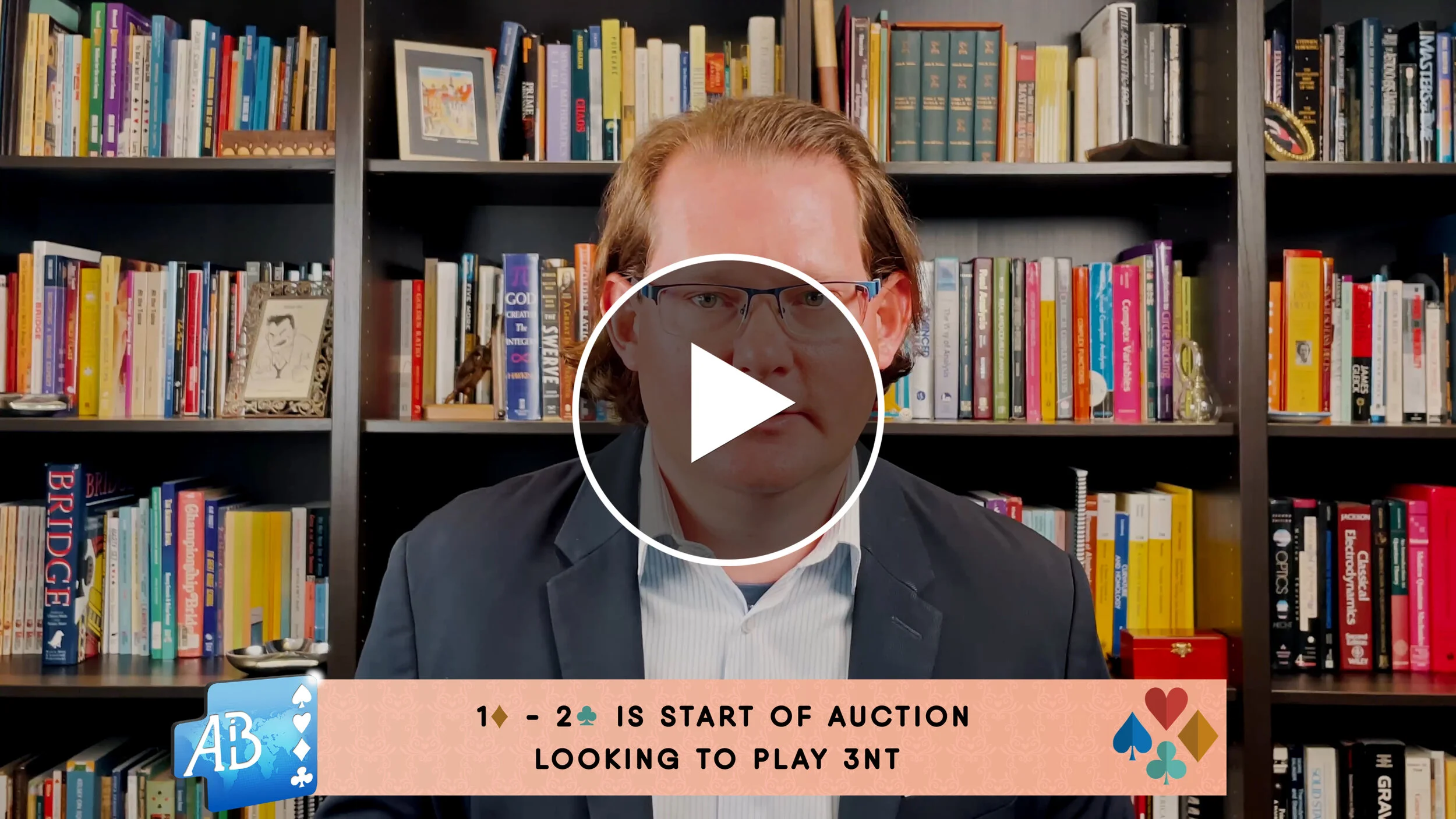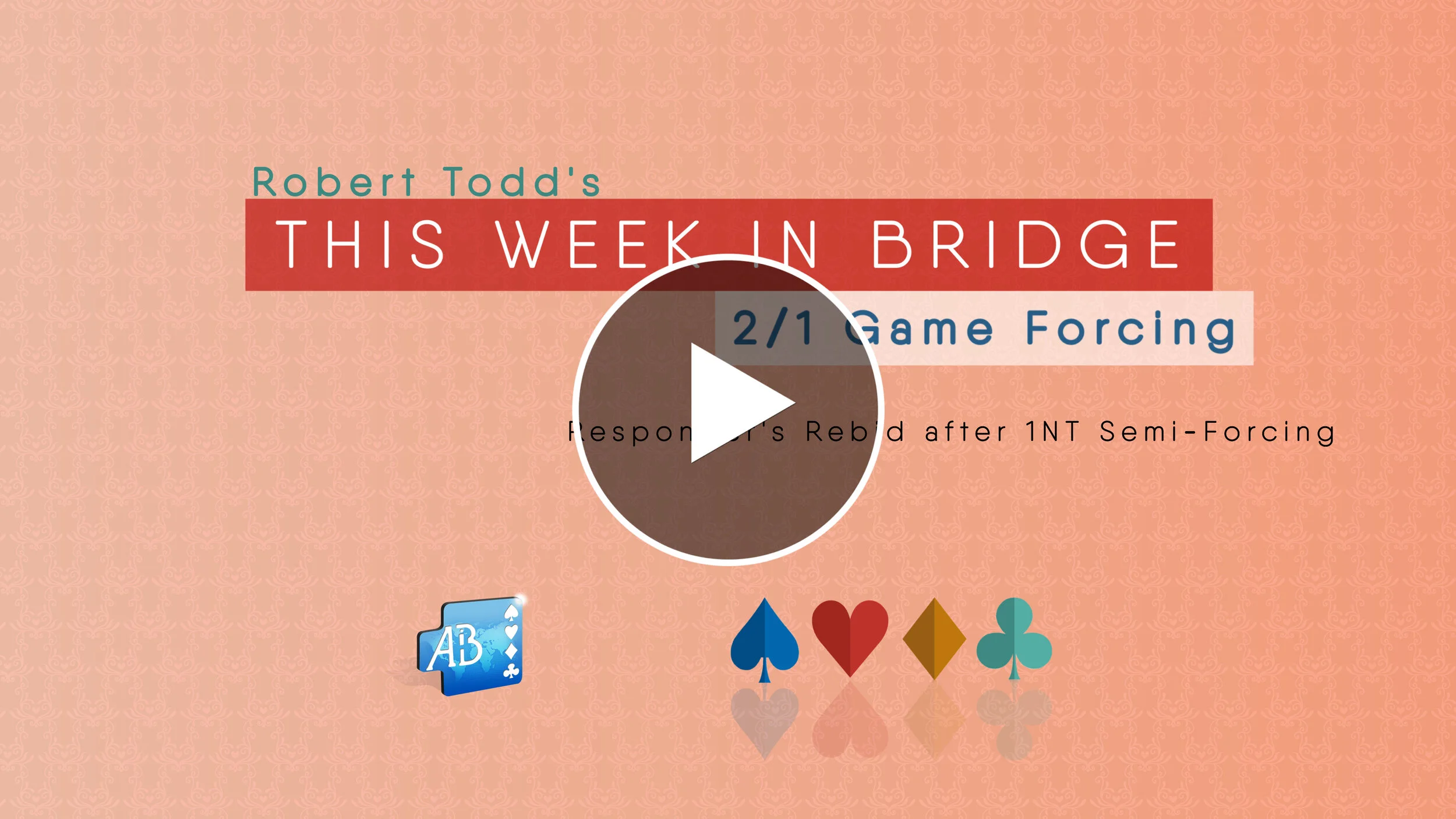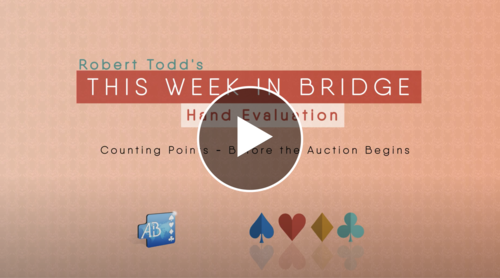Featured
TWiB Lesson #585 (1 of 8)
The concept of having a conventional bid like Drury available to show a limit raise in support of partner’s Major suit when we are a passed hand is a regular part of most partnerships’ passed hand bidding structure. Given that making a 2/1 bid into a minor suit is not that attractive (or even possible!) by a passed hand, it makes sense to allocate both 2♣ and 2♦ as artificial raises of Opener’s third seat (or fourth seat) Major suit opening bid. Many partnerships that play Drury play 2-Way Drury, using one bid to show a 3-card limit raise and the other a 4-card limit raise. But a more sophisticated structure can allow us to describe even more hand types in the same bidding space.


















































































TWiB Lesson #338 (1 of 8)
Opener’s rebid is one of the most important actions in the auction. Here we look at how we make this bid when we have a balanced hand.
Lesson
Practice Hand
Video
Podcast